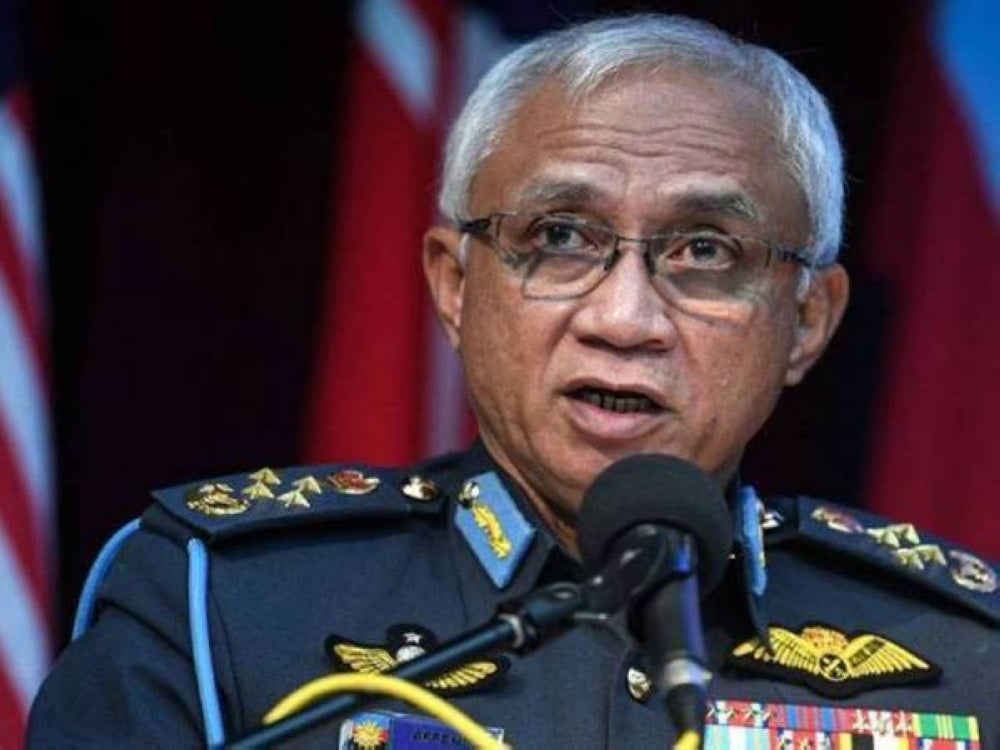[EXCLUSIVE] The limit that empowers: Malaysia's pragmatic gambit to maritime parity [Part 2]

LANGKAWI – In the tumultuous arena of the South China Sea tensions, where military dominance remains a distant dream due to financial constraints, Malaysia's quest for maritime parity emerges in the form of pragmatic optimization.
Armed with resourcefulness and determination, the nation, whose waters have been frequently intruded upon by Chinese vessels, has opted for rearming and revitalizing existing assets instead of waiting for new acquisitions.
It was a workaround that Chief of Armed Forces General Tan Sri Affendi Buang deemed necessary to ensure a robust naval presence in safeguarding its maritime interests within the constraints of available resources.
"We can put aside our aspiration to achieve maritime superiority. But with the right amount [of money], we can achieve maritime parity.
"In fact, there are a few of our older ships that are back in the water, with some being reequipped and having their capabilities enhanced," remarked the 60-year-old Kuching-born officer.
Tensions and altercations in the South China Sea are mainly caused by Chinese vessels intruding into Malaysia’s exclusive economic zone (EEZ), which spans 200 nautical miles from its shoreline.
For example, in April, the 165-meter Chinese Coast Guard cutter Zhong Guo Hai Jing 5901 was spotted loitering some 60 nautical miles off Bintulu.
Such brazenness was presumably borne out of China's claim on virtually the entirety of the South China Sea based on its fictitious 'nine-dash-line', which was essentially dismissed by the Permanent Court of Arbitration in the 2016 case of the Philippines v China.
The Court ruled that China not only exceeded what is entitled under the UN Convention on the Law of the Sea but also had no legal basis to claim rights to resources within the nine-dash line.
"There is an acute shortage of assets to protect and patrol our seas for ensuring safety. This has been a recurring concern.
"Which is why we have been emphasizing the need for a bigger budget allocation in order to beef up the military, especially our maritime forces," reasoned Affendi.
However, in order to keep our portion of the South China Sea safe, the security of the sky above it must not be neglected as well.
And when it comes to military matters of the skies, Affendi is no stranger – after all, he was the Chief of Air Force.
But the reality of the security of our national airspace is rather similar to its maritime counterpart as well – ill-equipped to handle major foreign threats, despite having an official blueprint to go about it.
"When we developed the CAP55 (Capability 2055), affordability was a key consideration. We had to be realistic so that the government could support our plans.
"It's a compromise between numbers and capability, and looking at the landscape that we need to protect, numbers matter," said Affendi.
Indeed, numbers do matter.
Affendi came from an era when Malaysia used to have swarms of aircraft, and back when he was a fighter jet pilot, the country had 88 multi-role combat aircraft (MRCA).
MRCA is a classification of combat aircraft that can be flown in any conditions, basically making them our frontline fighter jets.
When the country purchased the MIG29-Fulcrum and F18-Hornet in the mid-90s, it immediately decommissioned the F5-Tiger and the A4-SkyHawk, effectively lowering the MRCA count to 26 units.
And then in the early 2000s, the tally grew to 44 after Malaysia bought 18 units of SU30-Sukhoi.
However, in 2016, the country decommissioned the 18 units of MIG29-Fulcrum that it bought in the mid-90s – which were never replaced – thus putting the current total of MRCA at 26 units of F18-Hornet and SU30-Sukhoi.
The latter two aircraft, respectively, are 30 and 20 years old.
"That's why the Air Force is prioritizing the procurement of LCAs (Light Combat Aircraft)," said Affendi, referring to Malaysia's recent purchase of 18 units of FA50-Golden Eagle from Korean Aerospace Industries.
"We are looking into forming three squadrons, which means there will probably be a second or third batch of LCA purchases. As for our present SU30-Sukhoi and F18-Hornet, I believe they can be flown for another 10-15 years," he added.
For those unfamiliar, LCA is another type of combat aircraft classification that can also be used for advanced pilot training.
"We are also investing in ground radar to strengthen our maritime surveillance and reconnaissance capabilities with the acquisition of Anka [a medium altitude long endurance class of unmanned aerial system].
"We are a maritime nation. Therefore, we must ensure that we have what is needed to protect our maritime sovereignty in light of what is happening in the South China Sea today," Affendi stressed.
This is a two-part exclusive interview in conjuntion with the ongoing 2023 Langkawi International Maritime and Aerospace Exhbition. Part 1 was published on May 25, 2023.










